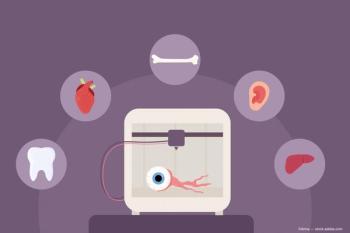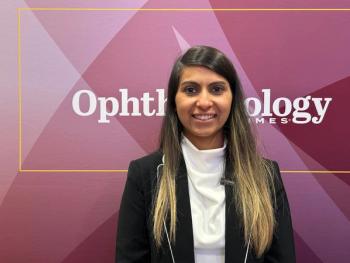
- Ophthalmology Times: July 15, 2020
- Volume 45
- Issue 12
Toric stability: A minor change with a major impact for patients
Lens offering surgeons a reassuring amount of resistance to movement in the eye
Special to Ophthalmology Times®
The Tecnis Toric II (ZCU) lens (Johnson & Johnson Vision) will be very familiar to any surgeon who has implanted other
The optic is unchanged and the lens looks identical to the Tecnis Toric I (ZCT). It loads into the injector the same way, unfolds at the same comfortable speed and controlled manner, and centers well.
Related:
From a material and optical quality standpoint, it has all the same properties of a Tecnis lens, including aspheric optics, low chromatic aberration, and no glistenings.
In my experience, this lens is not difficult to rotate in either direction, clockwise or counterclockwise, when making small adjustments intraoperatively to achieve the desired axis alignment.
However, there is a reassuring amount of resistance to movement in the eye. When you stop applying angular force to the lens, it stops moving.
The lens incorporates a relatively simple haptic modification with the potential to have a big impact. We know that rotational misalignment of a toric
Although the Tecnis Toric I ZCT platform demonstrated robust optical performance even in cases of lens rotation,2,3 surgeons were keen to identify lens modifications that could further enhance stability.
Related:
I was part of a team that tested prototypes with various modifications in overall length, haptic geometry, or haptic polishing. The ZCU lens incorporates a very minor change to the haptic polishing, leaving a “frosted” area on the haptics (Figure 1) that creates a friction plate effect.
In multicenter clinical studies conducted outside the US, the lens was implanted in 98 eyes.
Lens position was evaluated using 2 masked readers and custom image analysis software to compare the positions of 10 different iris and scleral landmarks (Figure 2) in photographs taken at the end of the surgery (through the operative microscope) and at the slit lamp at postoperative follow-up visits.4
This digital photographic comparison is the most robust method I have seen for measuring rotational stability. It demonstrated that mean rotation of the lens with the ZCU haptic modification at 1 week was less than 1° (0.71° ± 0.69°) and none of the eyes had rotated more than 5°.5
Using the commercially available Tecnis Toric II now, I continue to see very little rotation. The lens simply stays exactly where I leave it at the end of the case.
Related:
Previously, it was not uncommon to find that irrigating viscoelastic out of the chamber or hydrating the wound would create enough turbulence to make the lens rotate, but this particular lens moves very little with irrigation of the anterior segment.
As a practical matter, there is a very short learning curve—or none at all—for surgeons transitioning to this lens with prior Tecnis experience. If you have tried it, let us know what you think of the stability.
About the author
John A. Vukich, MD
p: 414/877-6414
Dr Vukich is a consultant to Johnson & Johnson Surgical Vision. He is an eye surgeon in Milwaukee, Wisconsin, specializing in cataract surgery.
--
References
1.
2. Canovas C, Piers P, Sun M, Alarcon A, Weeber HA, Waring G. Impact of residual astigmatism on optical and visual performance for toric intraocular lenses. Invest Ophthalmol Vis Sci. 2018;59(9):254.
3. Lee BS, Chang DF. Comparison of the rotational stability of two toric intraocular lenses in 1273 consecutive eyes. Ophthalmology 2018;125(9):1325-1331. doi:10.1016/j.ophtha.2018.02.012
4. Kasthurirangan S, Feuchter L, Smith P, Nixon D. Software-based evaluation of toric IOL orientation in a multicenter clinical study. J Refract Surg. 2014;30(12):820-826. doi:10.3928/1081597X-20141117-01
5. Vukich J, Waltz K, Straker B, et al. A randomized controlled, multicenter clinical investigation of rotational stability of IOLs. Paper presented at: AAO Annual Meeting; 2019
Articles in this issue
over 5 years ago
Diagnosing a 'down looker'over 5 years ago
Dropless, hands-free regimen key for patientsover 5 years ago
Gene therapy offers hope for choroideremiaover 5 years ago
Machine-learning algorithms could help predict course of NPDRover 5 years ago
Thyroid eye disease: Not limited to visual impairmentover 5 years ago
Beating burnout with camaraderieNewsletter
Don’t miss out—get Ophthalmology Times updates on the latest clinical advancements and expert interviews, straight to your inbox.














































.png)


